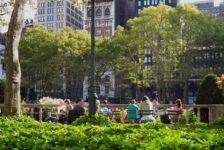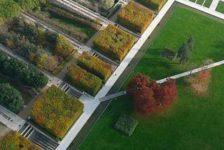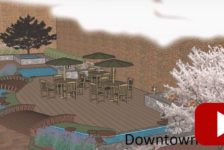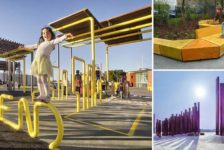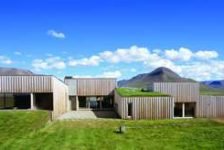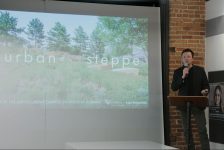The month of March marks the end of our campus recruiting season each year. We wrap up our visits to universities across the country and prepare for an incoming class of student interns. We dust off our teaching skills and look forward to the fresh perspective students offer.
This year, planning quickly changed course when COVID-19 prompted all 120 of our professionals to begin working safely from home. While many firms were forced to pull the plug on internships altogether, the challenging circumstances fueled our drive to find a way to provide a meaningful internship experience. Fortunately, we were able to double down on our commitment to putting our people first and advocating for the profession by hosting 8 students from across the country in a nine-week virtual internship program. It was no small feat, but we now see the expanded reach we can have as design professionals and want to share our approach, process and lessons learned.
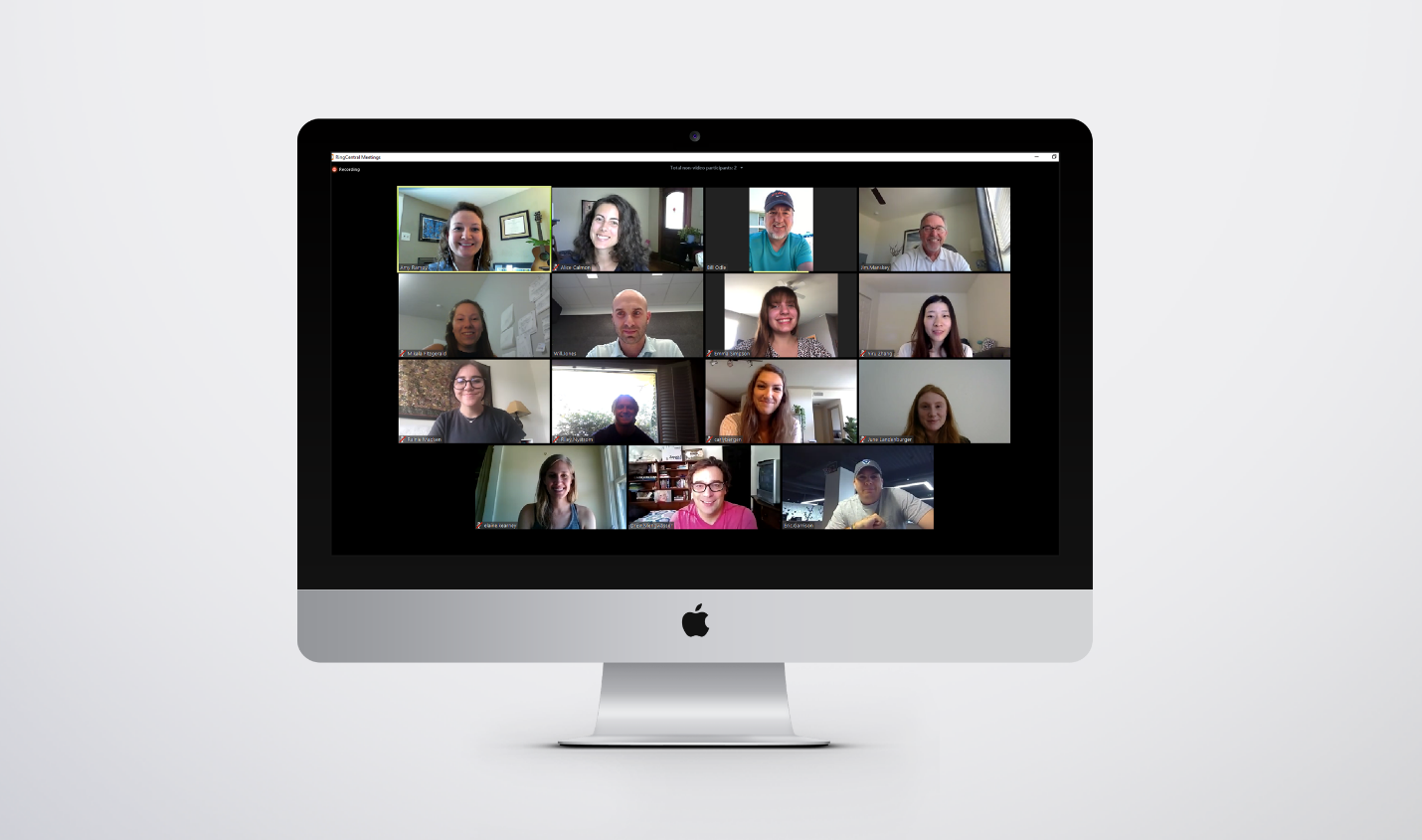
Our Intern Class engaging with TBG’s President, Bill Odle, and Managing Principals
Staying True to Who We Are
Within our 33-year history, we have witnessed the disruption that crisis imparts on the talent pipeline. Both 9/11 and the 2008 recession led many landscape architecture students to search for other, more eminent, opportunities offering more certainty for their careers. Even I, as an experienced Landscape Designer, shifted to the more stable arenas of marketing and operations during the downturn in 2008. Drawing on this personal experience, I understood the importance of supporting others through uncertain times and career pinch points.
TBG’s commitment to our people and the profession made the decision to move forward with summer internships an easy one, and we quickly agreed that a virtual program would be in the best interest of everyone involved. The biggest question was how we would pivot from a deeply rooted in-person apprentice-based tradition, to an unexpected digital future. We asked ourselves:
- What would a virtual internship look like?
- Would the interns find it meaningful?
- Would their programs find it acceptable for required credits?
- Would we have the necessary technology and infrastructure?
- Would our professionals be able to mentor and teach through virtual means?
- Could engagement be maintained in a virtual setting?
- How could we pull this off in just a few weeks?
- …Is this even possible?
Never Stop Learning
We started with what we knew from our existing internship program. The intent of TBG’s program is to introduce students to the complexities of professional practice, to take a deep dive in sharing our own design approach, to introduce constraints found in real-world projects, and to foster connections between students and professionals at all levels.
Prior to program development, we consulted with department heads from several represented universities to confirm credit acceptance for the program. These conversations afforded brainstorming opportunities on how best to engage in a virtual environment, since most academic programs had already been working virtually for a few weeks.
We then adapted the plan to a virtual environment, including three major components.
Lecture Series
An engaging series of presentations led by TBG experts – organized around the creative process and operational essentials.
Design Studio
A series of creative sprints building upon concepts from the lecture series and facilitated by design leaders using many of their own active projects. Scale and scope varied requiring a creative reboot with each effort. Studio sessions ended with a virtual pin-up and critique, and students walked away with work for their portfolios.
Mentor 1:1s
Regularly scheduled one-to-one conversations, each with a dedicated mentor, intended to foster connections and teach on a more intimate scale.
Once our broad group of internal experts and our 2020 intern cohort expressed enthusiasm and eagerness to participate, we were off to the races – setting up virtual meetings, ensuring our interns had the required technology and working with our internal teams to develop content. While it was additional work for our designers, there were silver linings discovered during the process. Many across the firm worked together to help create a positive and memorable learning experience – despite the circumstances. Planning their presentations fostered collaboration across the firm and our teams were fortified in knowing they would be helping inspire future leaders in the profession.
Empowering our Future Leaders
We kicked off our virtual internship program with a week of introductions, ice breaker activities and design warmups. Knowing it is not often a priority in academic programs, we themed week one “Mechanics of a Design Firm” and even had a design sprint focused on designing your own design firm. As our intern cohort grew more comfortable with digital collaboration and got to know each other, they also met their mentor and interacted with our current and past Presidents. They were also exposed to each member of our firmwide resource teams, including Marketing, Accounting, IT and People Operations. As the program progressed, each week’s content built on the last and the intern group learned about each phase of the creative process including: project discovery and kickoff, performance goal setting, inventory and analysis, the role of workshops, graphic communication, planning, schematic design, presentation approaches, design development, and the many layers of documenting design.
During the weekly design studio sessions our intern cohort was exposed to projects of all scales and scope, many more projects than they likely would have seen in a traditional internship in a local office. Alongside the variety of projects, they were able to engage with 10 design leaders who shared real world limitations for the design challenges while offering guidance and encouragement through rapid ideation exercises. Pushing beyond perfectionism, intimidation or any fears that might inhibit creativity, the exercises demonstrated the importance of ideas over a beautiful sketch.
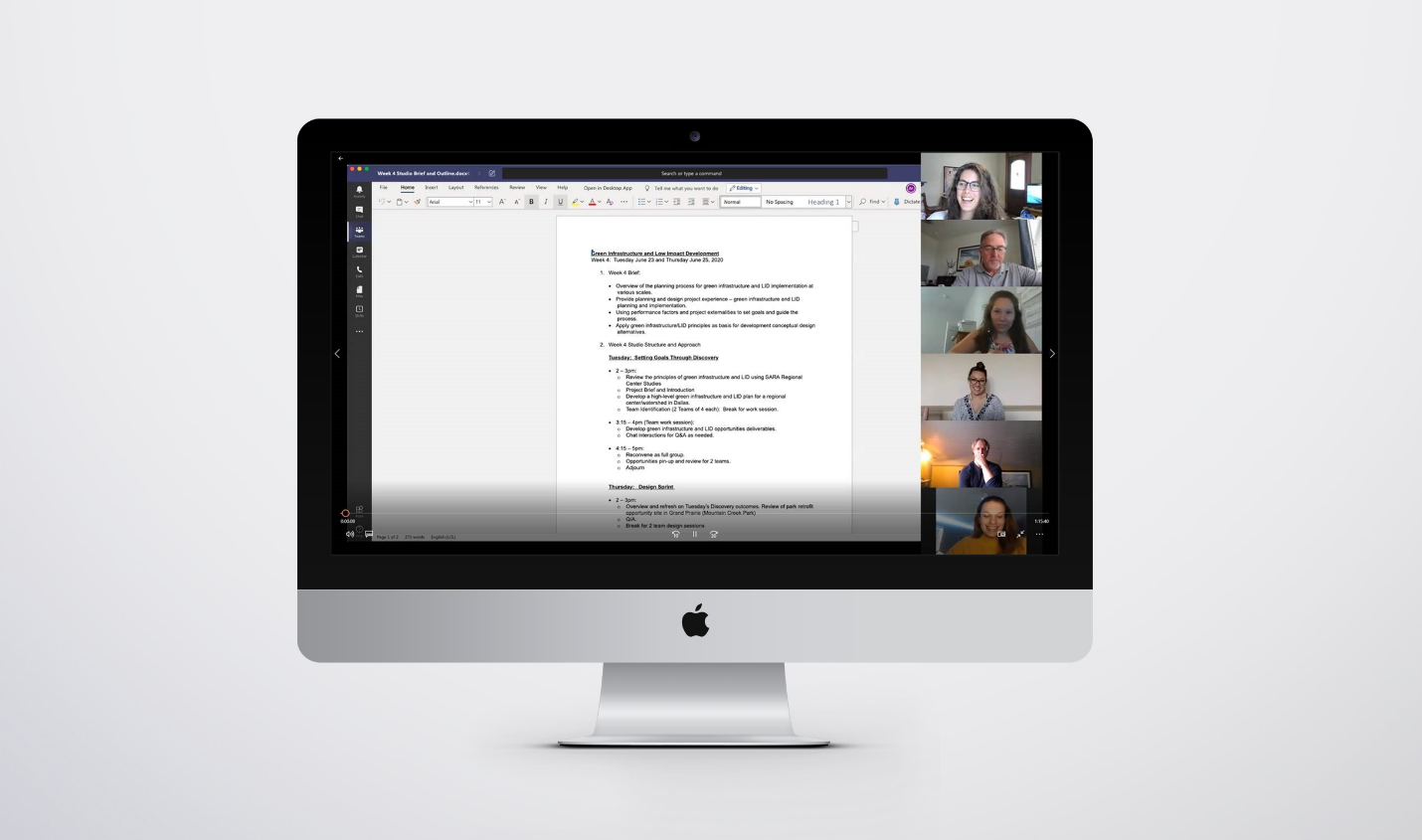
Learning about Green Infrastructure and Low Impact Development
Each week the featured project changed, so our interns were challenged to work together to solve problems quickly. The entire intern cohort was able to work in small teams for the duration of the nine-week program building confidence and comradery and a realization that collaboration is key whether you are in person or on a screen. They learned about the difference in their own academic programs and were challenged with delegating responsibilities, gaining a better understanding of their own strengths and the unique value they each could bring to a team. The importance of storytelling in the design process was emphasized as they were continually held accountable to defend their design outcomes and demonstrate landscape performance and the WHY behind each of their solutions. Armed with a more intimate understanding of the design process and practical tools to help them with their projects, our interns now return to school with bolstered confidence and fresh inspiration towards the amazing impact they can have on the world as landscape architects.
Looking Ahead
We gained every bit as much as we shared through this virtual internship experience, and we are optimistic about the ongoing potential of the virtual model, perhaps as a foundational component in new and improved hybrid internship models in the future. We hope to expand our reach and welcome a broader range of interns to the firm each year through virtual engagements. COVID-19 has brought about many challenges and uncertainties, but the success of our virtual internship program and the tremendous agility we have seen in students and professionals alike, gives us great hope that a bright future lies ahead.
Published in Blog, Cover Story, Featured



